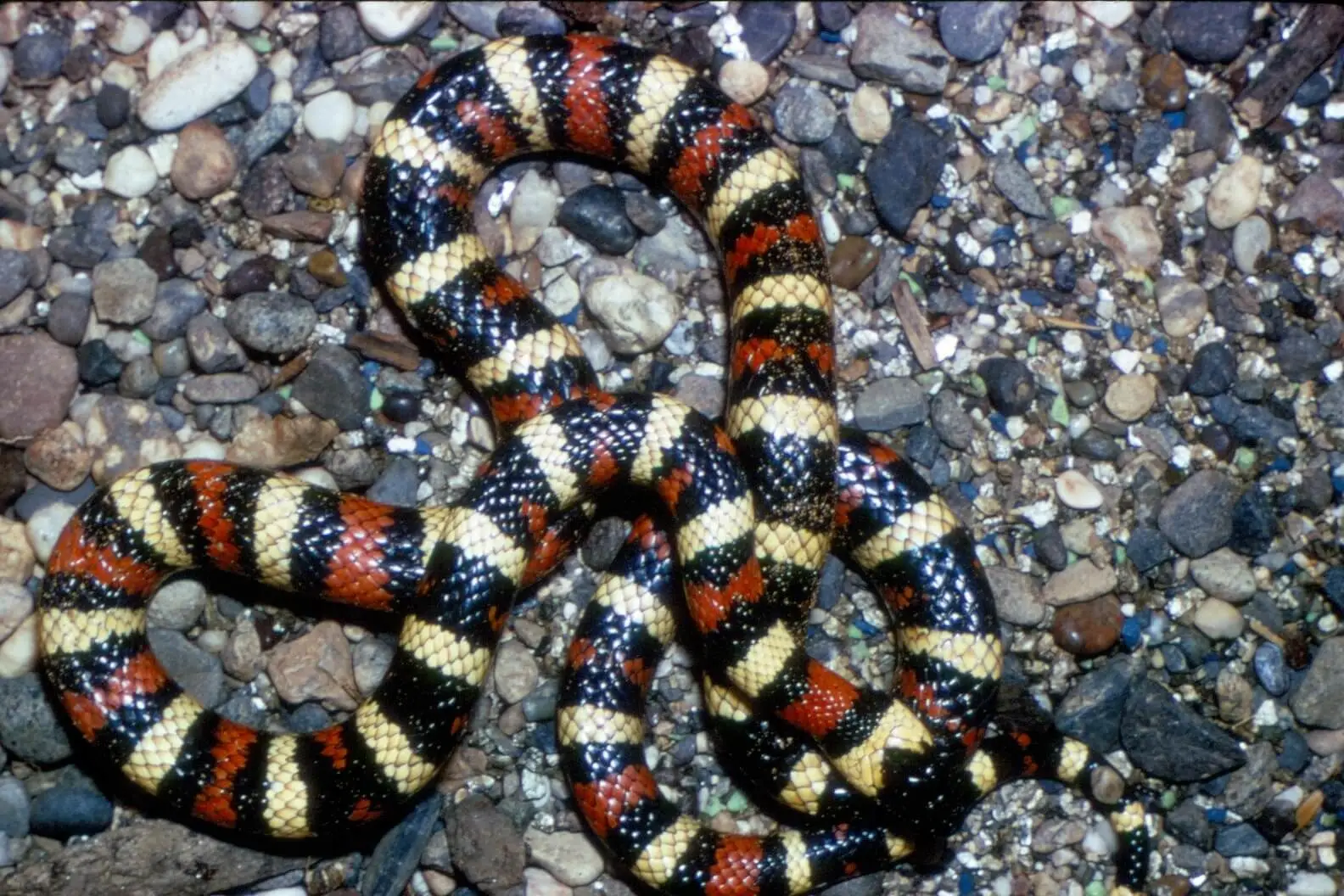| Scientific Name Lampropeltis zonata Size Between 24 to 30 inches long Habitat Rock crevices, rotting logs, or shrubs in open wooded areas near streams Status Oregon listing: Sensitive |
About
The California mountain kingsnake stands out with its distinctive red, black, and white bands. This medium-sized snake is sometimes mistaken for the venomous coral snake, but the California mountain kingsnake is harmless and can be distinguished by the black borders around each red band.
The California mountain kingsnake lives in moist microhabitats within pine forests, oak woodlands, and in the chaparral of southwestern Oregon valleys. This elusive snake spends most of its time underground, concealed in rock crevices, rotting logs, or shrubs in open wooded areas near streams. Their main prey include lizards, birds, small mammals, and other snakes. As predators, snakes help to control the populations of their prey and keep their ecosystems in balance.
Why do they need our help?
California mountain kingsnakes suffer from habitat loss due to development and urbanization in much of their historic range. Logging practices can also fragment important woodland habitat. Habitat protection and restoration, including the management of vegetation succession, are key to this species’ success.
Did you know?
- Kingsnakes are immune to rattlesnake venom! This allows them to hunt and eat young rattlesnakes.
- Many snakes, including kingsnakes, spend the cold months of winter in dens, called hibernacula. Snakes gather together in burrows, caves, or rock piles to stay cozy and avoid freezing temperatures.




